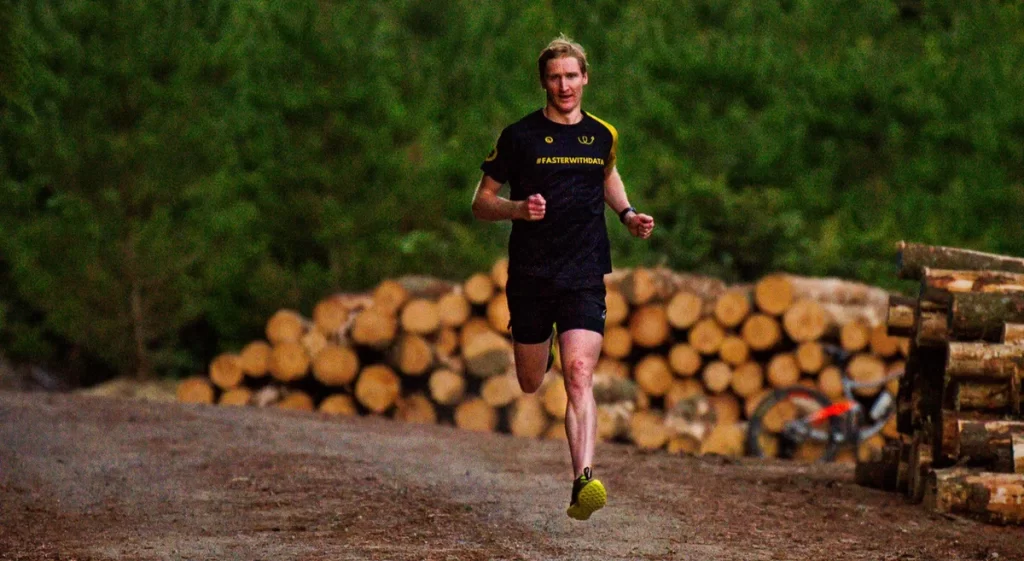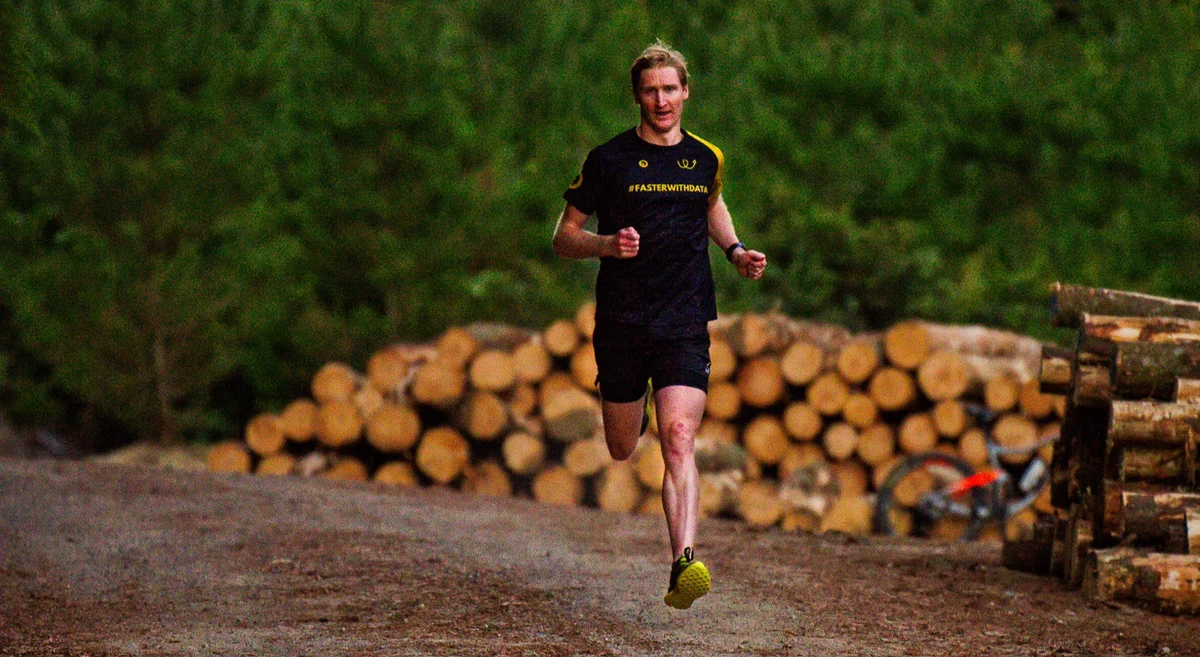“To travel further, a runner typically has to propel themselves higher to prevent their feet hitting the ground. This increase in vertical oscillation (VO) requires the length of each foot strike to increase to allow the runner to “catch” themselves when landing and then push off again to “throw” their body back into the air. “
Running cadence (the number of steps taken per minute) influences running economy (how well energy is converted into forward propulsion). The “ideal” running cadence varies between individuals, but is approximately 180 steps per minute (spm).
I’ve always had a long, slow running gait with a cadence of around 160 spm during aerobic runs and only a slight increase when running faster. As an example, my average cadence was 164 spm during my last marathon (2:38 h, 3:40 min/km) and 168 spm in my last 10 km race (32:24 min, 3:14 min/km).

So why does a low cadence matter?
There are two ways to increase running pace: (1) increase your stride length and ( 2) increase your stride rate (cadence). Ideally, when speeding up, both of these parameters should increase. However, runners with a low cadence must compensate for this by having a relatively large increase in stride length. This is commonly the case for taller people, like myself (6.2”).
The issue with only increasing your stride length is that it leads to an inefficient running gait. To travel further, a runner typically has to propel themselves higher to prevent their feet hitting the ground. This increase in vertical oscillation (VO) requires the length of each foot strike to increase to allow the runner to “catch” themselves when landing and then push off again to “throw” their body back into the air. You can monitor how long your foot spends on the ground by looking at ground contact time (GCT). A larger VO and high GCT take away precious energy that could otherwise be used for forward propulsion.
Research has also shown that increasing your cadence by 10% can significantly reduce the loading (energy absorption) on your hips and knees, which could help reduce your risk of injury.
Could I be a faster runner if I improved my cadence?
Since I’m on the comeback from a sacral stress fracture and am currently building back into training with a run-walk programme, I decided to use this time to work on my cadence and see if I could improve my running economy.
To test how cadence affects my other running metrics, in the middle of a 60 min aerobic run, I ran at my normal cadence for 4 min, followed by 4 min at a faster cadence. Here are my results:
|
Metric
|
Normal “Slow” Cadence
|
“Fast” Cadence
|
Difference
|
|
Time (min:s)
|
4:00
|
4:00
|
|
|
Cadence (spm)
|
162
|
172
|
10 (+6.2%)
|
|
Power (W)
|
288
|
300
|
12 (+4.2%)
|
|
Pace (min/km)
|
4:36
|
4:20
|
-16 (-5.8%, Note that this represents an increase in speed)
|
|
Heart Rate (bpm)
|
140
|
150
|
10 (+7.1%)
|
|
Form Power (W)
|
84
|
81
|
-3 (-3.8%)
|
|
Form Power Ratio
|
0.29
|
0.27
|
-0.02 (-8%)
|
|
Ground Contact Time (ms)
|
250
|
230
|
-20 (-8%)
|
|
Vertical Oscillation (cm)
|
8.87
|
7.89
|
-0.98 (-11%)
|
|
Stride Length (m)
|
1.31
|
1.33
|
0.02 (+1.5%)
|
There’s a lot to tease out in this table, so I’ll try my best to make my explanation easy to follow.
With an increase in cadence from 162 to 172 spm, my pace increased by 5.8% (from 4:36 to 4:20 min/km). Naturally, my power output also increased when I sped up, but only by 4.2%. That’s good news, as it indicates an increase in efficiency, but we need to look deeper.
As cadence increased, every metric relating to running economy showed an improvement. In particular, form power, the amount of power “wasted” and not used for forward propulsion, actually decreased, despite a 4.2% increase in power output! In addition, the form power ratio, which gives a relative comparison between form power and absolute power, improved from 0.29 to 0.27, also indicating a reduction in wasted energy.
How can I improve my running cadence?
Practice and patience. If you’re like me and run with a cadence in the low 160s, don’t expect to be running at 180 spm on your next run. Instead, try to increase your cadence by 5 spm during short intervals throughout your run by focusing on a faster toe-off driven by your arm-swing and knee lift. You can use the “anking” drill before you start your concentrated cadence intervals to aid in this process (bottom of the article). I recommend using the lap function on your watch to compare data between fast and slow cadence intervals.
Keep in mind that the 180 cadence recommendation will not suit all runners, particularly those who are very short or tall, so the focus should not be on reaching this specific value but, rather, on improving your current cadence (read about this here). For runners like myself with a cadence on the lower side, an increase from your current cadence may prove to be very beneficial for your running economy.
Need help analyzing your cadence?
Join my Faster With Data Training Group. Along with hundreds of world-class training plans, I deliver live Q&A and file analysis tutorials every week.
There’s no fixed term, so you can join for as long as you need my help!
Ankling Drill
https://youtu.be/wu7GTF7D19c

Leave a Reply